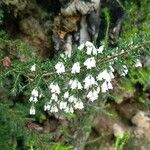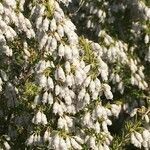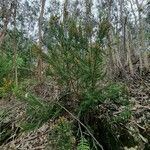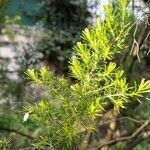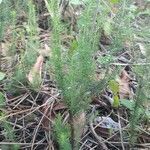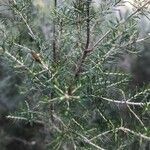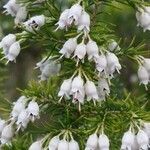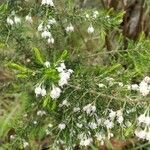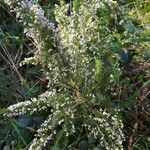Plants ± erect, 15-30 cm; twigs of current season green, with short, stiff hairs ca. 0.3 mm, older twigs gray and brown striped, glabrescent. Leaves in whorls of (3-)4; petiole 0.2-0.3 mm; blade linear-lanceolate, flat to compressed-triangular in cross section, 2.5-4(-7) × 0.2 mm, margins revolute, sparsely prickled, surfaces glabrous. Inflorescences terminal panicles, ellipsoid, 10-25 cm. Pedicels 1-1.5 mm, shortly hairy. Flowers: calyx lobes (connate ca. 1/3 their lengths), ovate, 1 × 0.7 mm, margins entire, apex subacute, glabrous; corolla white to pinkish white, broadly campanulate, 4-5 mm, lobes ovate-deltate, 0.5-1 mm, apex broadly rounded; stamens 10; filaments 2 mm; anthers awned, ca. 0.7 mm, awns 2, basal, 2-ciliate, 0.3 mm; ovary glabrous; style 2-2.5 mm; stigma exserted, obconic. Capsules 1-2 mm, glabrous. Seeds ellipsoid, 0.6 × 0.5 mm, finely pitted.
